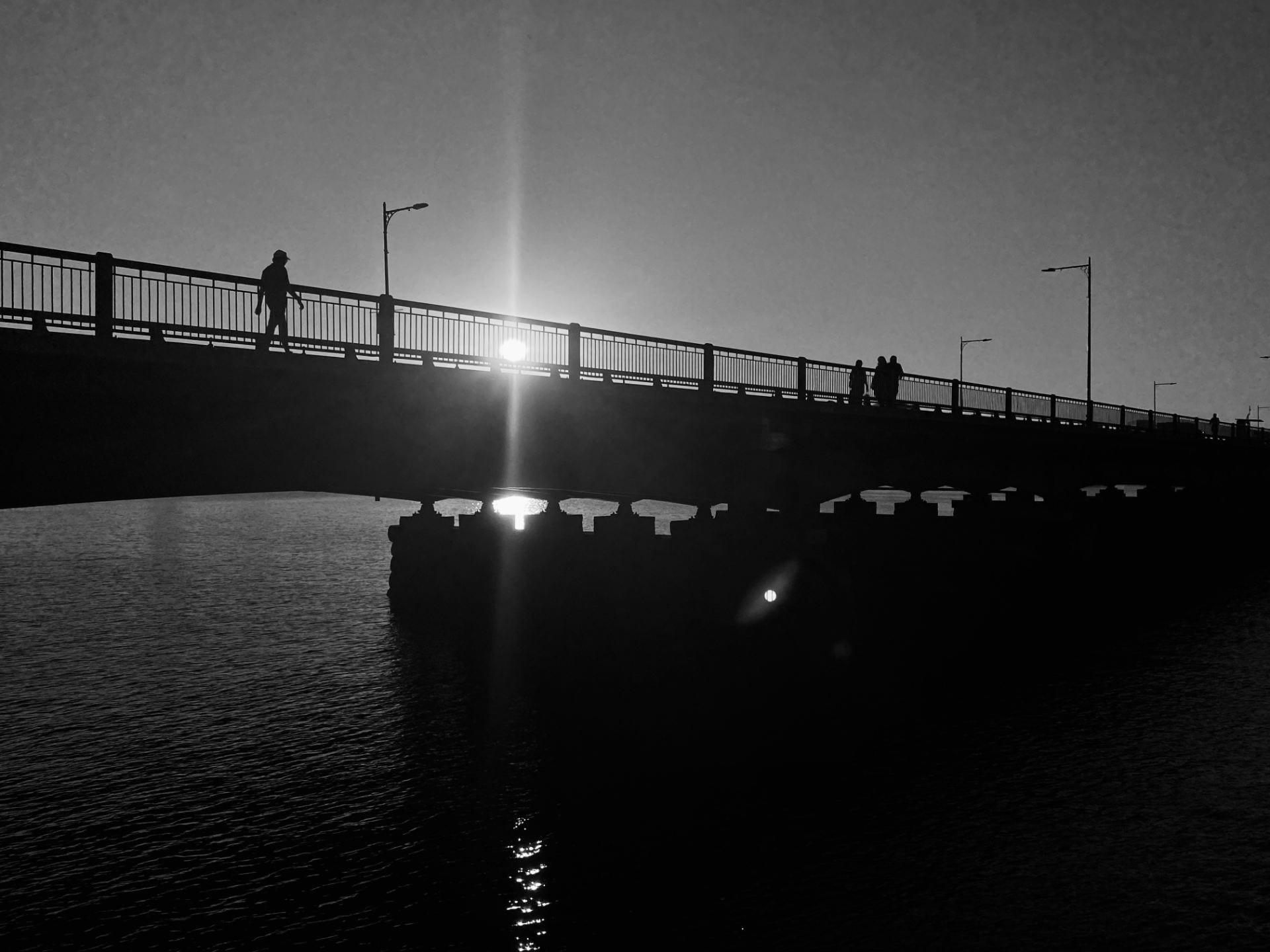It was about 6:15 a.m. on Wednesday, February 21st, and 61-year-old Don McCevoy was following the perimeter of the New Science Building. He walked with a slight limp, which he’s had for years, the result of some long-forgotten injury. Don wore old jeans and a bright blue windbreaker. He swept a cane from left to right in front of his feet, inspecting the overturned snow in its wake. In his left hand he carried a gallon-sized bucket.
“We didn’t find as many today,” said Don. “But that’s unusual. Yesterday we found over sixteen.”
Don has been collecting bird carcasses for almost twenty-seven years, and he notes the increase in deaths since the construction of the New Science Building. “It’s those huge glass windows,” he observes. “Birds don’t understand those huge glass windows.”
Don is a widely acclaimed and significantly published researcher of the American Association of Ornithology. Some of his most referenced articles include: “Handling Avian Specimens: An Evaluation of Preservation Methods in the Modern Archive” (1994, Vol. 134a, ISSN 0005-3857); “21st Century Migration Patterns of the Black-Throated Blue Warbler” (2001, Vol. 210b, ISSN 0003-5489); and “A Survey of the Shorebirds of Massachusetts” (2012, Vol. 32, ISSN 0031-4958). Don has been tracking recent changes in the populations of common bird species in western Massachusetts, and has discovered a 2.1% decrease in northern waterthrush counts since the window panes were installed in the New Science Building. He finds this figure alarming, considering that the main structure is far from complete. “It’s safe to predict a massive incline in mortality rate as soon as they install the remaining windows. Specular reflection. I can imagine their little bodies pinging against the great wave of glass in multitudes. And lying on the ground, tiny bird organs remain warm and full of vital fluids even as the legs stiffen with rigor mortis. A gory spectacle for anyone inside,” Don muses. “The unsuspecting sparrow wouldn’t notice anything’s awry until it’s right up against the glass, gazing into its own reflection.”
Don has an entire room in his basement dedicated to his menagerie, which he organizes on shelves by year collected and species name. Don has installed special LED light fixtures with UV filtering to prevent potential harm to his collection. Some birds have been stuffed, with their wings outstretched and held in place by wire structures. Others are preserved skeletons in glass domes. Don’s wife, Siobhan, is a local realtor. She and Don have hardly spoken in eleven years, except when they compare guesses during their weekly viewing of The Price is Right. Siobhan often spends nights at her sister’s house in Nantucket.
Don works a quiet job unrelated to his passion. The construction of the New Science Building has been a highlight of Don’s recent fixations. He spends long periods of time in his basement, adjusting his latest array of specimens in their various states of decay. Sometimes, during Don’s daily routine, he considers the gravity of his task and the future ahead. We have to ask ourselves: Why would Amherst portray itself as an institution dedicated to conscious ecological behavior, and yet take actions that seem deliberately in opposition to this initiative? Even the installation of the windows on the western side of the building seems aimed at posing danger to its unsuspecting feathered victims. Studies by the North American Avian Society show that west-side facing windows contribute to 16% of bird deaths worldwide. The New Science Building is near the heart of the Bird Sanctuary. “I don’t understand the design team’s mission,” Don shakes his head. He takes photos of the large glass panes and shows them to Siobhan, who stands at the kitchen sink and gazes out the window expressionlessly. She glances at the photos briefly and turns away. “It’s beautiful,” whispers Siobhan. “I’d smash into those windows too, if only to be closer.” Siobhan carries a Taurus Millennium G2 Pistol in her handbag.
Projected completion time for the New Science Building is Fall 2018. Early birdsong accompanies unseasonably warm temperatures. Don fears the future ahead. He can’t help but wonder if the unfriendly design decision was intentional. He asks us to look deeper. “It’s no secret that several higher-ups in the Amherst College administration devalue bird welfare.” In fact, we were able to secure minutes of recent Committee of Six meetings, and find that certain members express deep resentment of birds. We will list a few of the most shocking sentiments here. “This dialectic has formed the central problem of my scholarship” -Adam Sitze. “I fucking hate birds” -Biddy Martin. Other administrators are similarly bitter. Suzanne Coffey fills birdfeeders outside her bedroom window with birdseed laced with rat poison. Some students also display alarming behavior toward birds. An anonymous sophomore, whose name rhymes with floss, admits to incorporating birds in his sexual stimulation techniques. In general, it seems that Amherst is an anti-bird campus.
As this monument of avian death is erected, consider the birds. Don lights a cigarette and peers into his bucket of wilted, damp bodies. With a few hours’ work, their wings will be pinned, outstretched in a parody of flight. “Siobhan,” Don sighs.
acgoldberg19@amherst.edu
